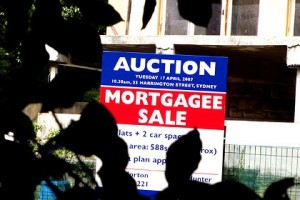Forced sales in the Sydney property market – rich pickings for investors?
November 30th, 2011
In the search for buying opportunities, Curtis Associates, buyers’ agents in Sydney, noticed a trend which began in October 2011 in the number of Sydney residential and commercial and retail properties being advertised for sale by mortgagees, receivers and managers. Such sales are collectively known as “forced sales” and the interesting trends identified during this month in which such sales spiked are the focus of this edition of CurtiseCall.
Key findings:
- Excluding industrial properties, 31 properties throughout the Sydney property market were advertised for sale by one type or another of forced sale with sale by auction accounting for 28 of the 31 advertisements
Of those 31 properties:
- 17 were residential
- seven were commercial
- five were retail
- two were mixed residential/commercial properties
- 15 were in inner ring suburbs as defined by the Australian Bureau of Statistics and included 27 Laycock Street, Neutral Bay which, having been bought in boom times on 21 September 2002 for $870,000, sold on 5 November 2011 for $1.055 million and 109/13 Griffin Place Glebe which remains for sale
- 13 of the last mentioned 15 properties were in the Sydney CBD and eastern suburbs including 1105/127 Kent Street, Sydney which, having been bought on 17 May 2001 for $760,000, sold on 17 November 2011 for $1.205 million and a new 10 level office building at 149 Castlereagh Street, Sydney which remains unsold as does a 195m2 retail premises at 102 – 106 Campbell Parade, Bondi
- none was in top end suburbs such as Mosman, Woollahra, Paddington and Killara; this being despite the volume of silent listings and unsolicited approaches received by Curtis Associates from owners in those suburbs
- six were in middle ring suburbs and included the still unsold mixed use property with high exposure at 93-94 Railway Street, Rockdale and 10 Bunyana Avenue, Wahroonga
- 10 were in outer ring suburbs including 96 – 98 Taren Point Road, Caringbah which failed to sell despite having Officeworks as the anchor tenant and
- 16 had sold as at 30 November 2011 which equated to an overall clearance rate of 52%.
- Of the 17 residential properties, only nine had sold as at 30 November 2011 which equated to a clearance rate of 53%.
November 2011 trends:
- The majority of forced sales in the Sydney property market were in the residential sector. (Interestingly, this appears inconsistent with the findings contained in the Landmark White inaugural Forced Sales Index dated 24 November 2011 which, although also noting a “heightened escalation in the number of mortgagee in possession/receiver sales” in the period from 1 October 2011 to 22 November 2011, found that in New South Wales, residential assets accounted for only 2.91% of the 23.26% of “major investment advertisements… listed as possible mortgagee in possession/receiver sales.” Reconciling this finding with ours, even after adjusting for sales of industrial property, suggests that mortgagees have been more aggressive over this period in the Sydney residential property market than in rest of the New South Wales residential property market)
- Inner and outer ring suburbs in the Sydney property market appear to be under greater mortgage stress than middle ring suburbs
- Although some sellers at the top end of Sydney’s residential property market are prepared to meet that market even at a capital loss, very few were formally forced to do so
- Despite the doom and gloom surrounding the retail sector, such properties accounted for only 16% of forced sales
- The strongest sign that the answer to the question posed above should be in the negative is the low 52% overall clearance rate and the 53% clearance rate for residential forced sales; the latter percentage being on par with non forced sale clearance rates in the Sydney residential property market in the same month. This suggests that any spike in forced sales is a function of mortgagees losing patience with a generally flat property market rather than a desire to cut losses for fear of that market collapsing. It might also explain why a significantly overcapitalized property such as 413 Bourke Street, Surry Hills remains on the market having been passed in on a $3.8 million vendor’s bid on 24 October 2011.
